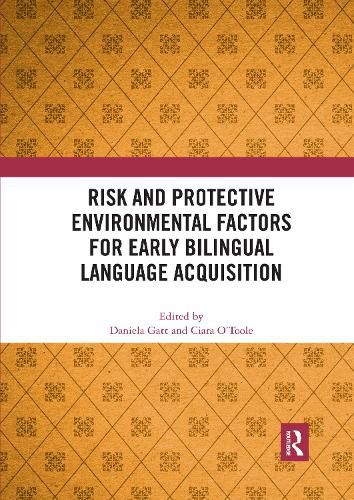Readings Newsletter
Become a Readings Member to make your shopping experience even easier.
Sign in or sign up for free!
You’re not far away from qualifying for FREE standard shipping within Australia
You’ve qualified for FREE standard shipping within Australia
The cart is loading…






Bilingual language exposure is highly variable, with wide-ranging influences on early language skills. This underscores the need for understanding what to expect in early language acquisition so that those with typical language development can be differentiated from those who are struggling or at risk, and so requiring early intervention. One of the key ways to look at language development in very young children is to investigate their vocabulary development, and for bilingual children, this means measuring their abilities in both languages.
This book takes an important step in this direction: it documents the expressive vocabularies of children aged 16-45 months who were exposed to different language pairs and bilingual contexts, and investigates the risk and protective effects of various environmental factors. In each of the six studies, the vocabularies of typically-developing children were measured using the vocabulary checklist of the MacArthur-Bates Communicative Development Inventories and its adaptations to other languages. Developmental and language background questionnaires provided additional information on children’s developmental history, risk factors for language impairment, language exposure, as well as parental education and occupation. This harmonised methodology was designed within COST Action IS0804 (Language Impairment in a Multilingual Society: Linguistic Patterns and the Road to Assessment). The outcomes of this cross-linguistic research contribute towards answering theoretical questions regarding early bilingual vocabulary acquisition. They also have clinical relevance, potentially assisting speech-language pathologists and those interested in early language development in distinguishing between clinically significant bilingual delays and the natural consequences of bilingual exposure. This book was originally published as a special issue of the International Journal of Bilingual Education and Bilingualism.
$9.00 standard shipping within Australia
FREE standard shipping within Australia for orders over $100.00
Express & International shipping calculated at checkout
Stock availability can be subject to change without notice. We recommend calling the shop or contacting our online team to check availability of low stock items. Please see our Shopping Online page for more details.
Bilingual language exposure is highly variable, with wide-ranging influences on early language skills. This underscores the need for understanding what to expect in early language acquisition so that those with typical language development can be differentiated from those who are struggling or at risk, and so requiring early intervention. One of the key ways to look at language development in very young children is to investigate their vocabulary development, and for bilingual children, this means measuring their abilities in both languages.
This book takes an important step in this direction: it documents the expressive vocabularies of children aged 16-45 months who were exposed to different language pairs and bilingual contexts, and investigates the risk and protective effects of various environmental factors. In each of the six studies, the vocabularies of typically-developing children were measured using the vocabulary checklist of the MacArthur-Bates Communicative Development Inventories and its adaptations to other languages. Developmental and language background questionnaires provided additional information on children’s developmental history, risk factors for language impairment, language exposure, as well as parental education and occupation. This harmonised methodology was designed within COST Action IS0804 (Language Impairment in a Multilingual Society: Linguistic Patterns and the Road to Assessment). The outcomes of this cross-linguistic research contribute towards answering theoretical questions regarding early bilingual vocabulary acquisition. They also have clinical relevance, potentially assisting speech-language pathologists and those interested in early language development in distinguishing between clinically significant bilingual delays and the natural consequences of bilingual exposure. This book was originally published as a special issue of the International Journal of Bilingual Education and Bilingualism.